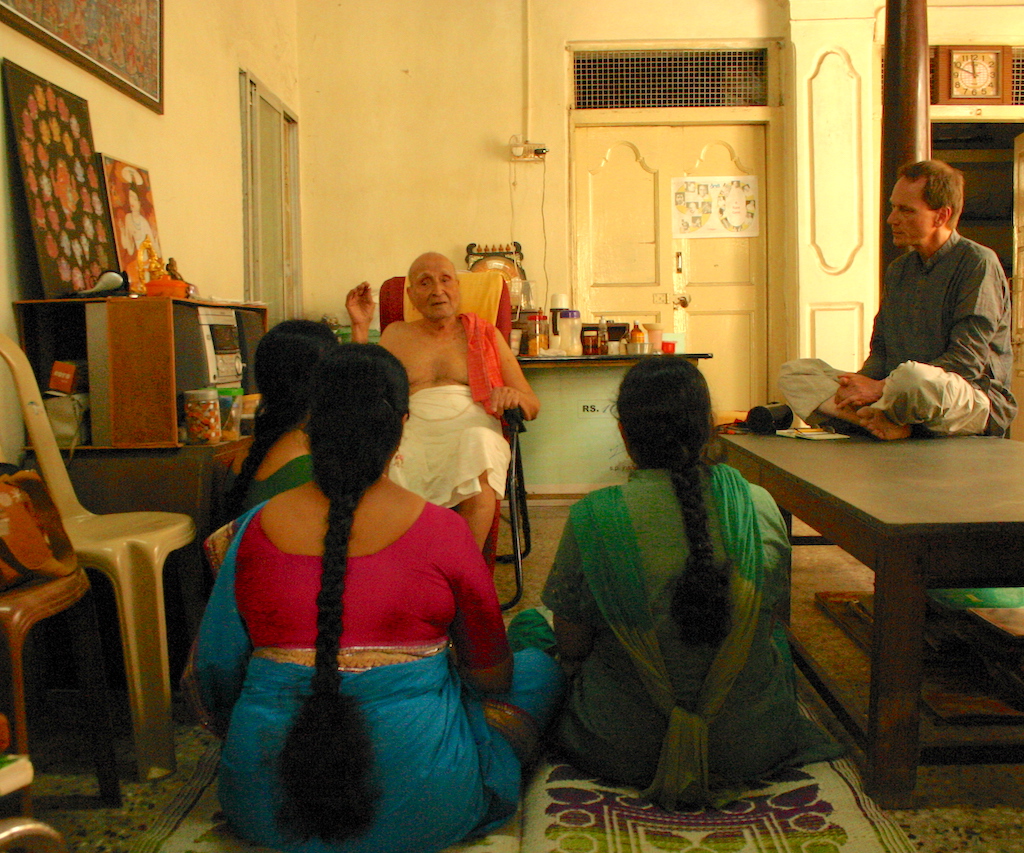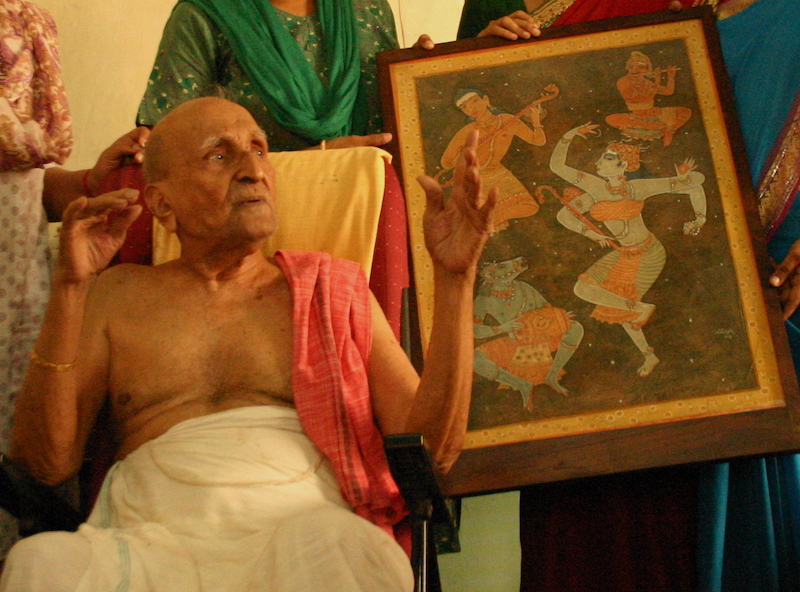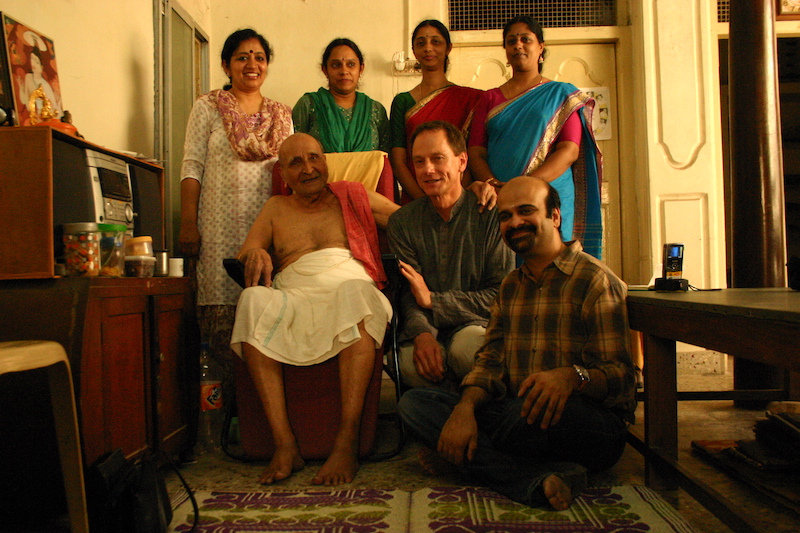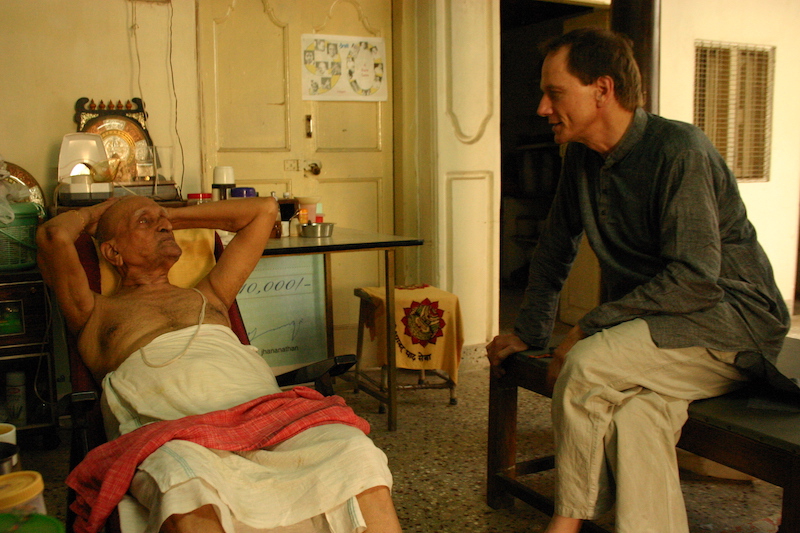S. Rajam (1919-2010) is credited with defining the visual identity of South India’s classical music. The present recording was made at his Mylapore home on 12 December 1997 when rehearsing for a lecture-demonstration; an annual event serving to highlight rare facets of South Indian (Carnatic) music. More about this recording & Sangita Kalasikhamani S. Rajam >>
Total duration: 82 min.(2 tracks mp3): Cassette side A 46:24, Cassette side B 36:22); for free download options visit https://archive.org/details/rajam-harikesanallur-lecdem >>
S Rajam teaching and receiving visitors friends including singer Vijayalakshmy Subramaniam, pianist-educator Anil Srinivasan & Ludwig Pesch Photos © Jayan Warrier (June 2009)
A couple of years ago, musician-friend Ludwig Pesch invited me to a music lesson taught by S Rajam. One of the disciples there was Vijayalakshmi Subramaniam. The bond between the master and the student became evident as the lesson wore on. As the midwinter sun cast lazy shadows across the courtyard, I saw the guru lapse into proud silences, letting his disciple sing unaided. […] The memory of that master lesson at Rajam’s home remains etched in my memory. As the master and the student rendered a composition in Anandabhairavi, a curious butterfly lodged itself on my shoulder. The stillness of that moment lent me a certain delicate joy. It was something deeper than contentment—an ability to stay absolutely rooted to the music. The rest, as they say, is mere noise.
Anil Srinivasan in “Her master’s voice and more” (Indian Express, 18 June 2011) >>
Find additional information by typing names “S Rajam Harikesanallur”, “singer Vijayalakshmy Subramaniam”, “pianist Anil Srinivasan” (or similar combination) here:
Anyone who is familiar with the world of Carnatic music, would recognise S. Rajam’s paintings of the Trinity—Syama Sastry, Tyagaraja and Muthuswami Dikshitar. They are probably his most popular creations. But his paintings of the seven swaras based on the visualisation of the swara personalities described in Sangeeta Kalpadrumam—the treatise by vidwan Harikesanallur Muthiah Bhagavatar, are equally interesting and beautiful. That Kalpadrumam was the source of inspiration for these paintings has been acknowledged by the late Rajam himself, in the detailed notes that he has given to Sruti.
https://sruti.com/printeditions/sruti-back-issues-individual/amjad-ali-khan-amp-ustad-hafiz-ali-khan




